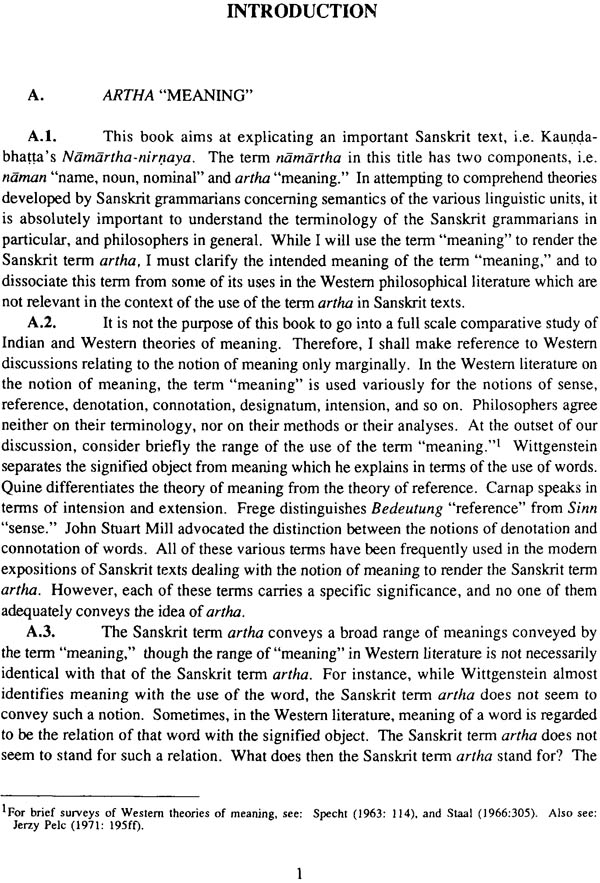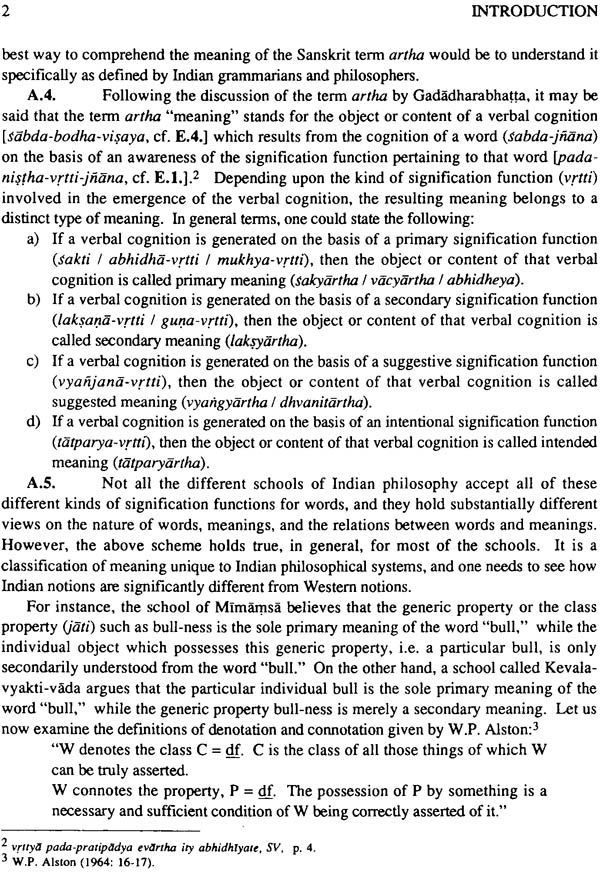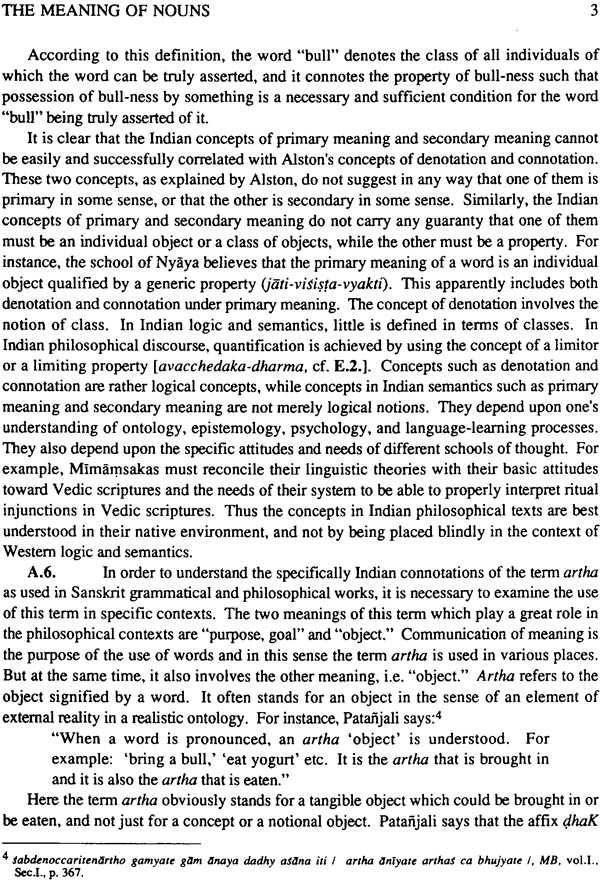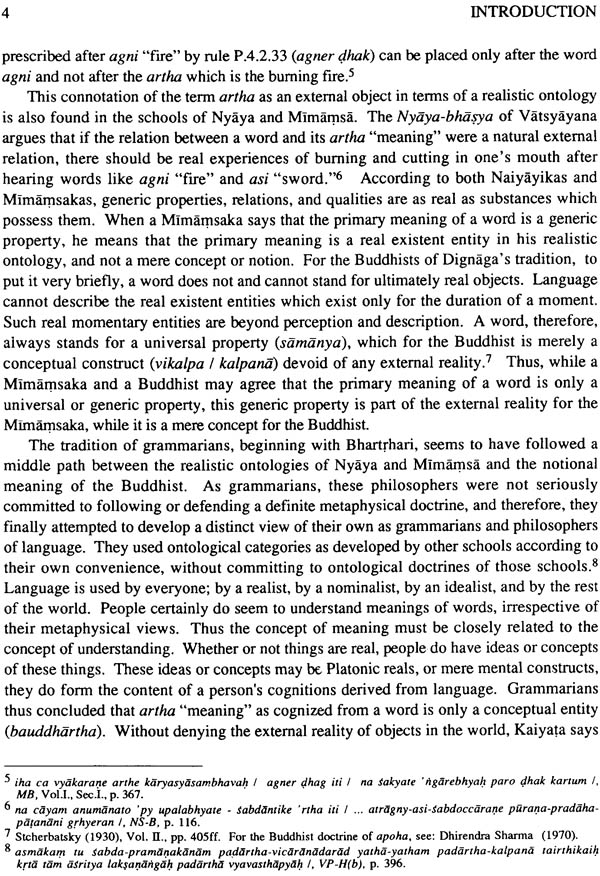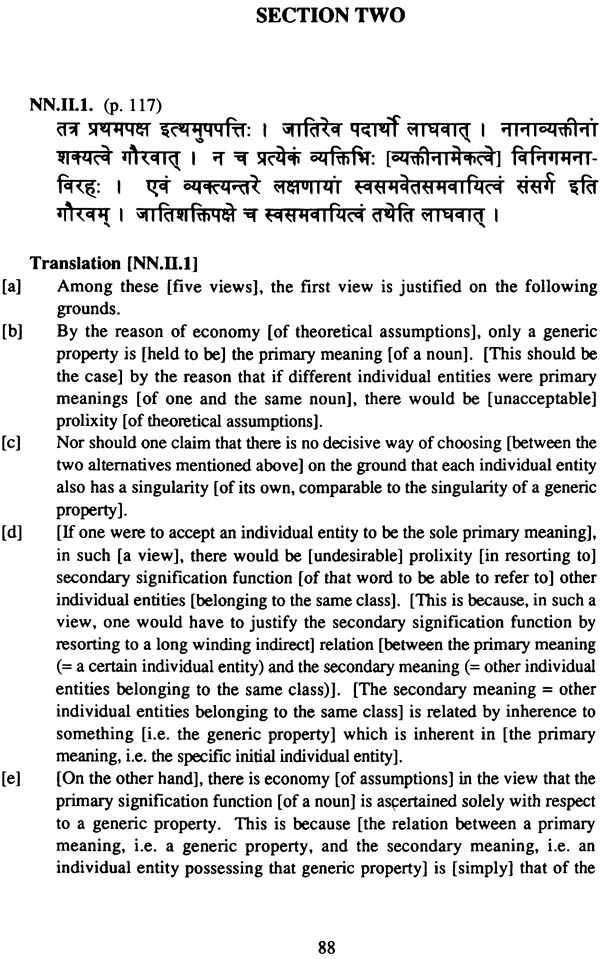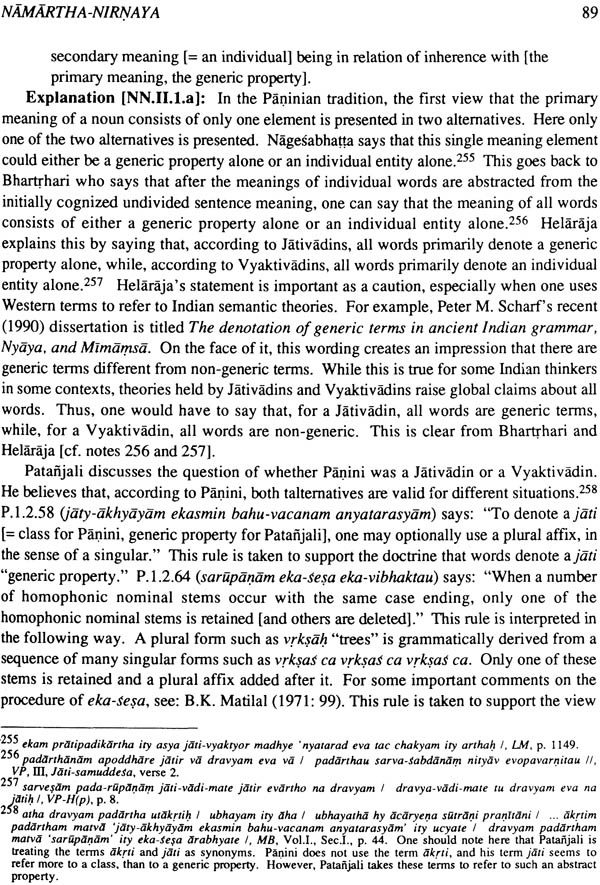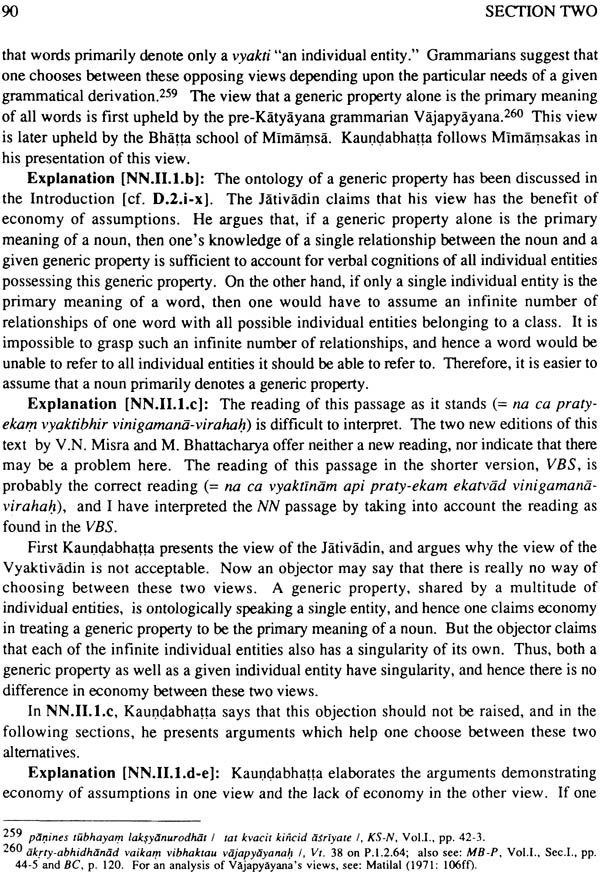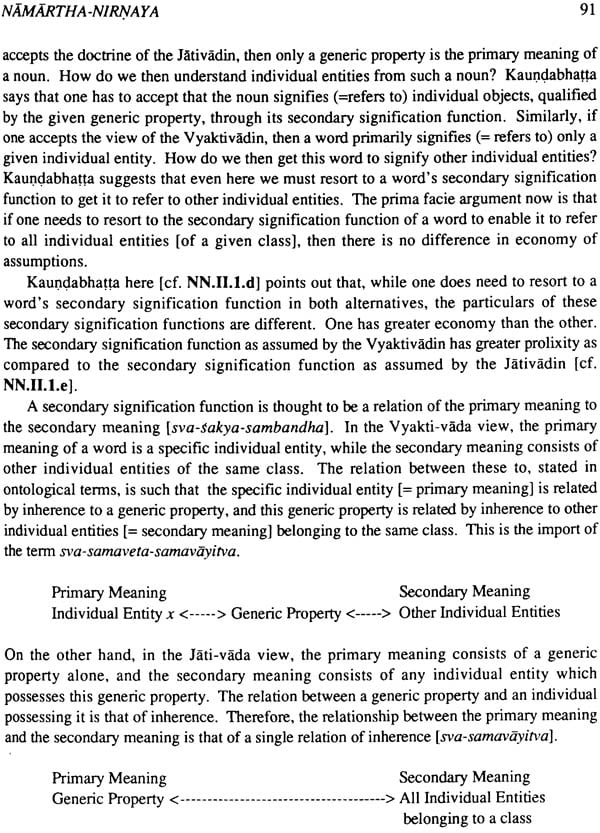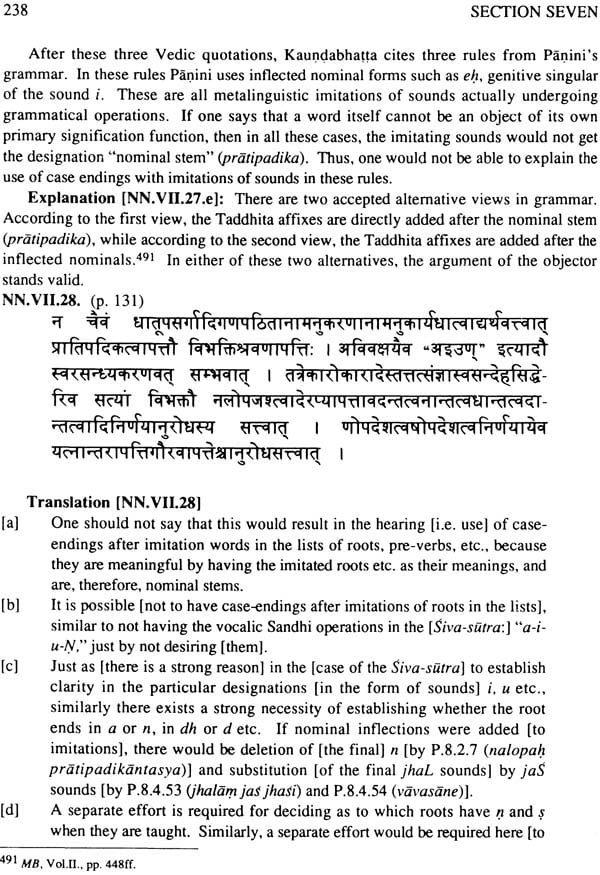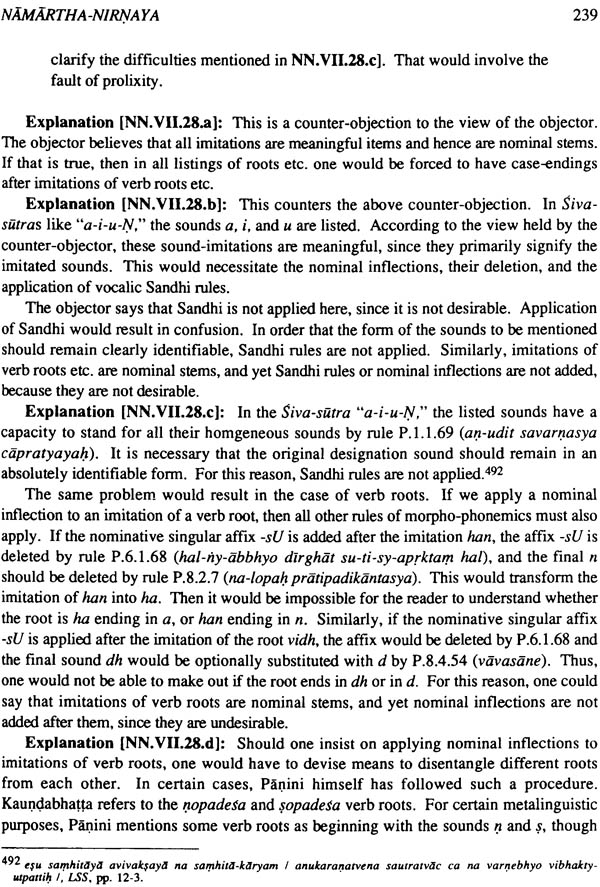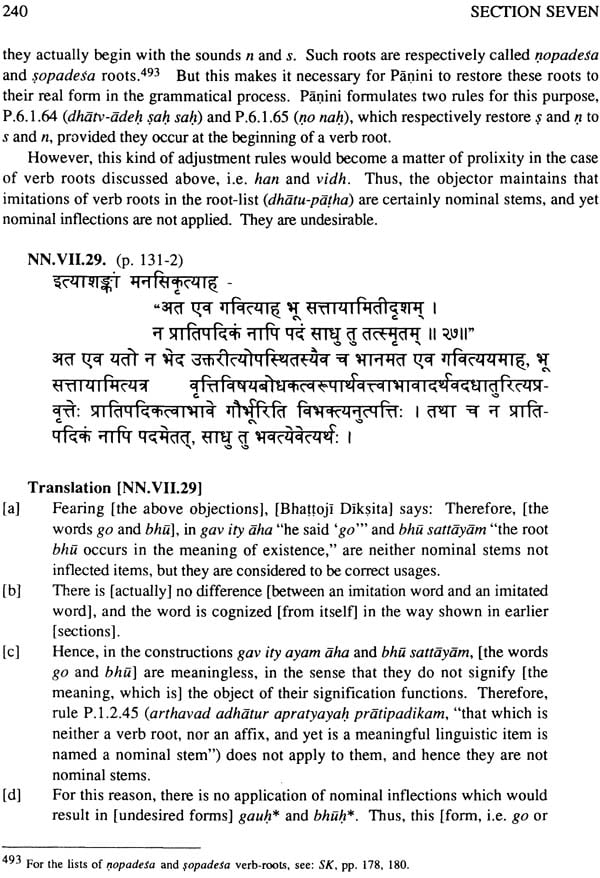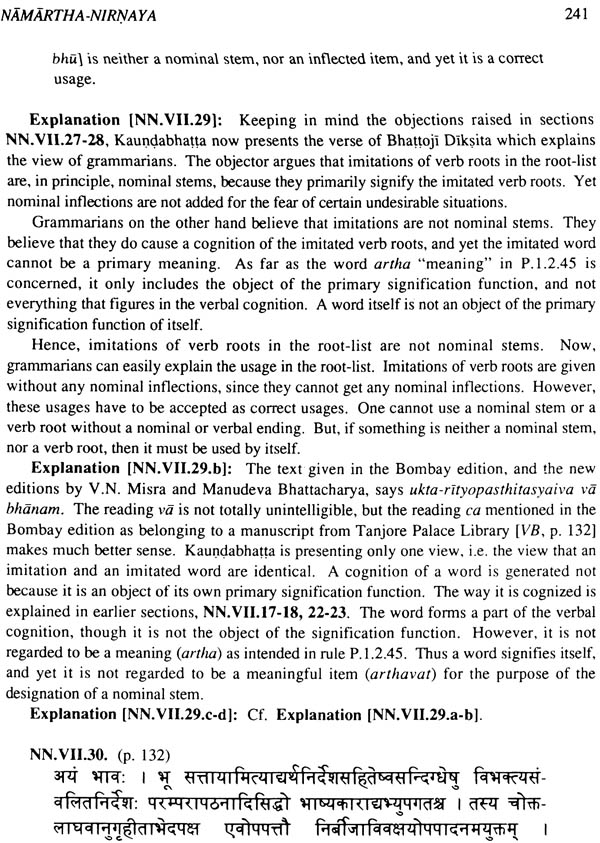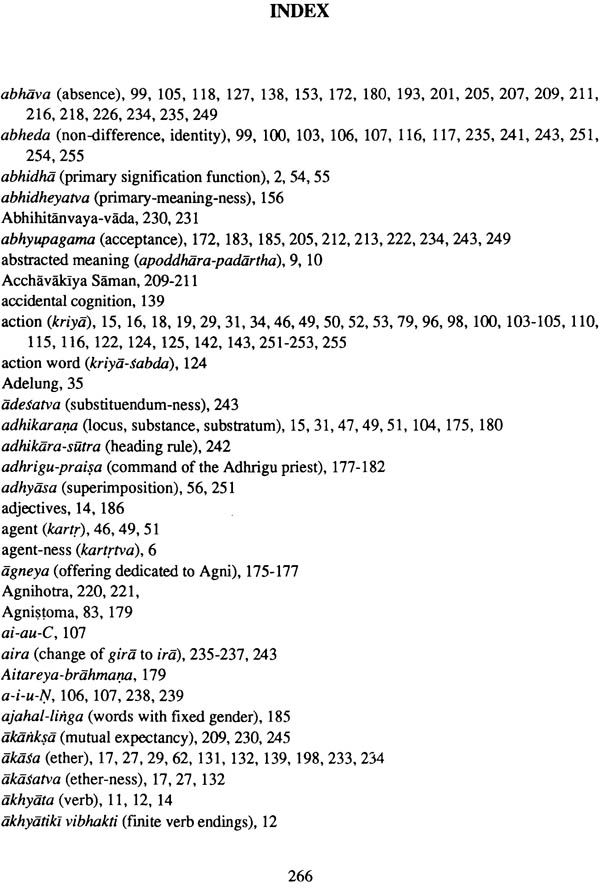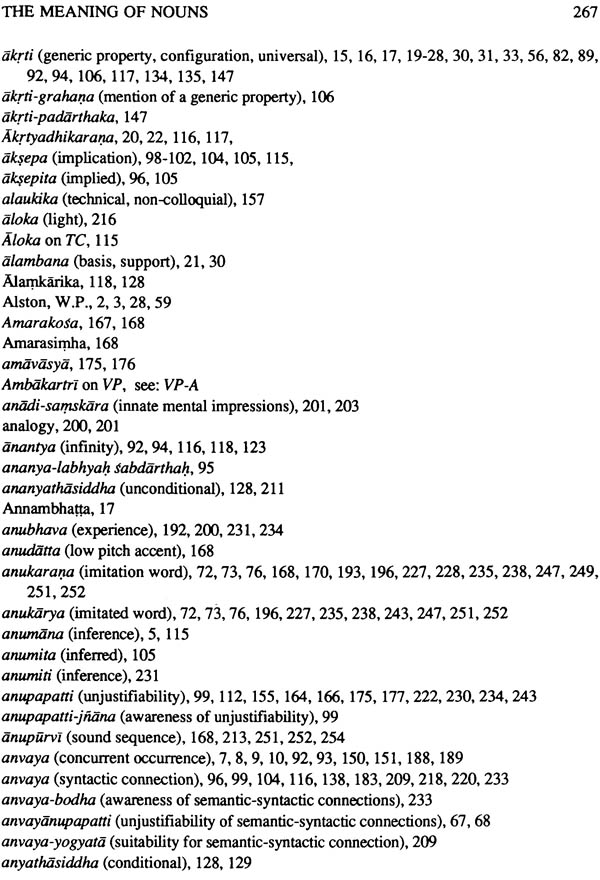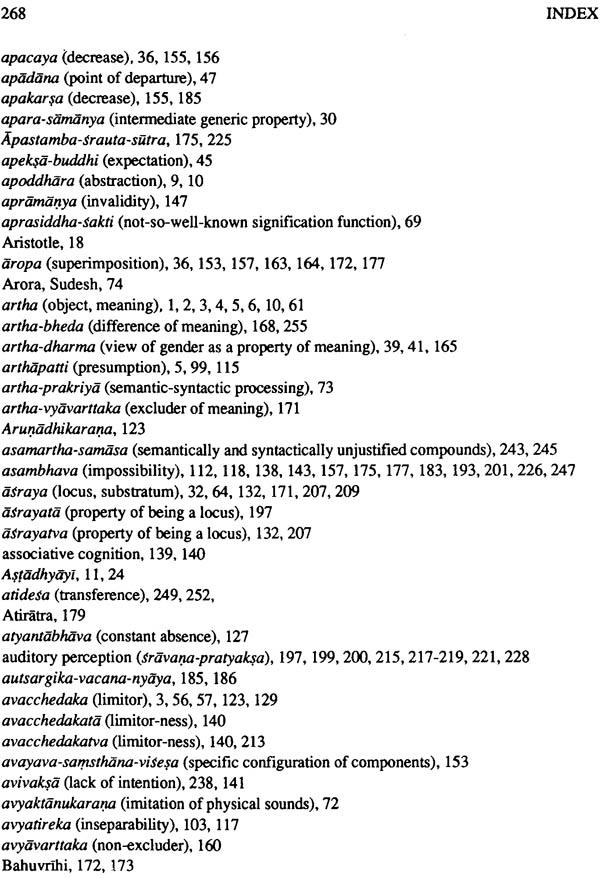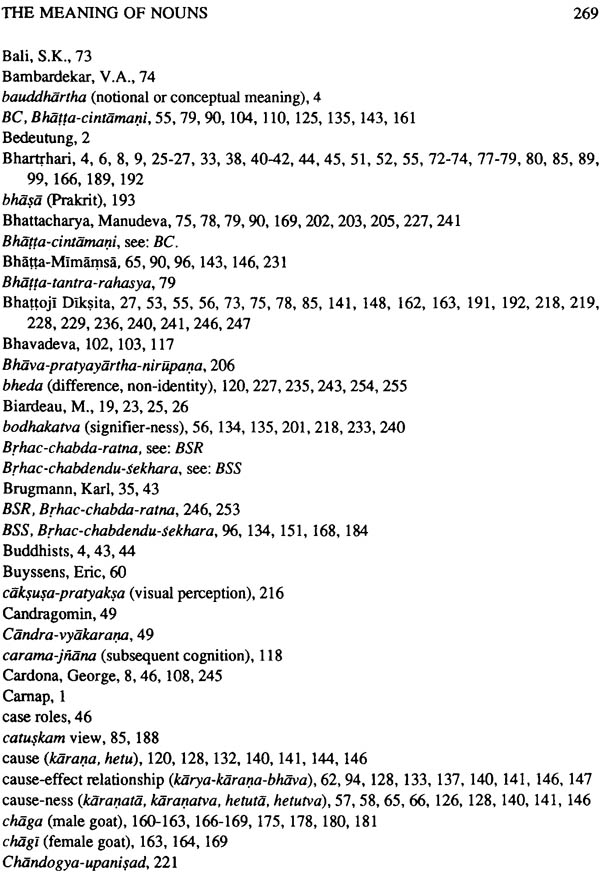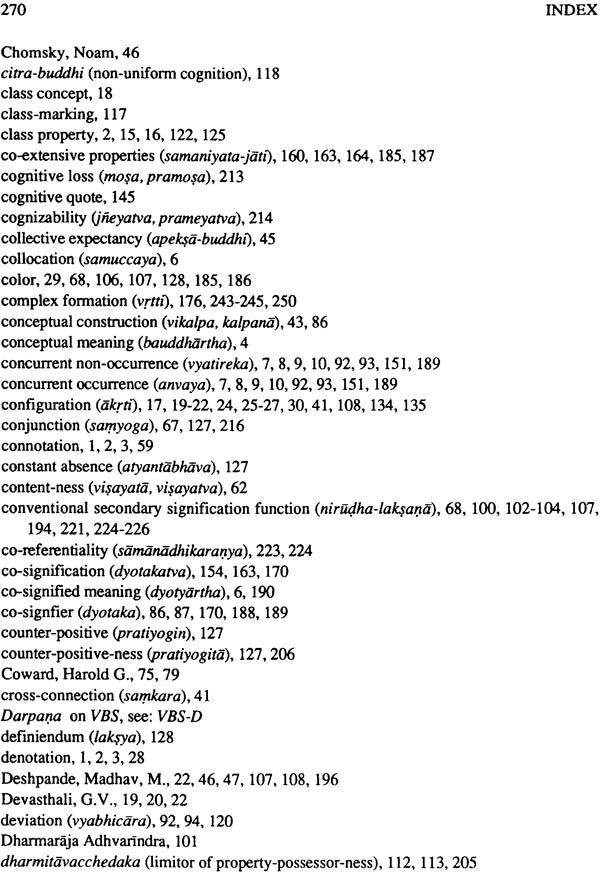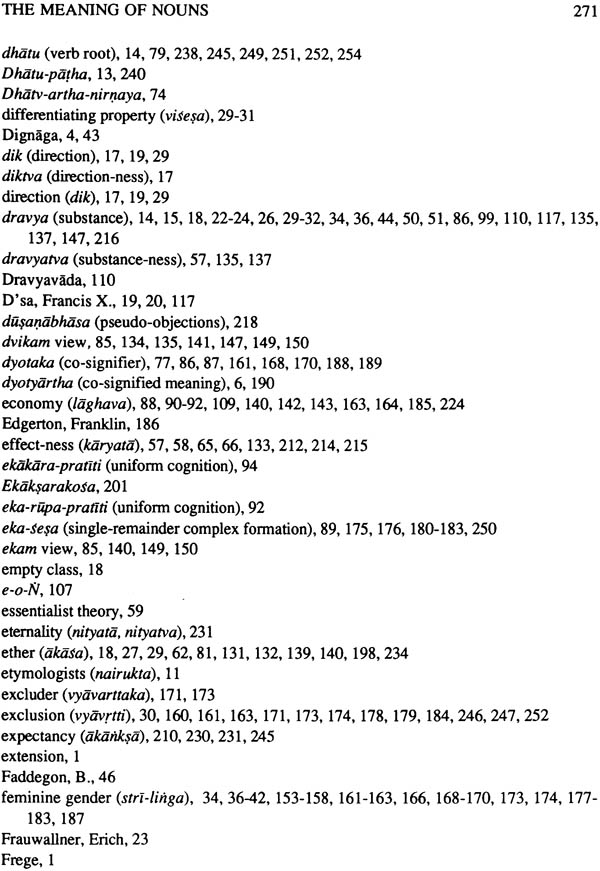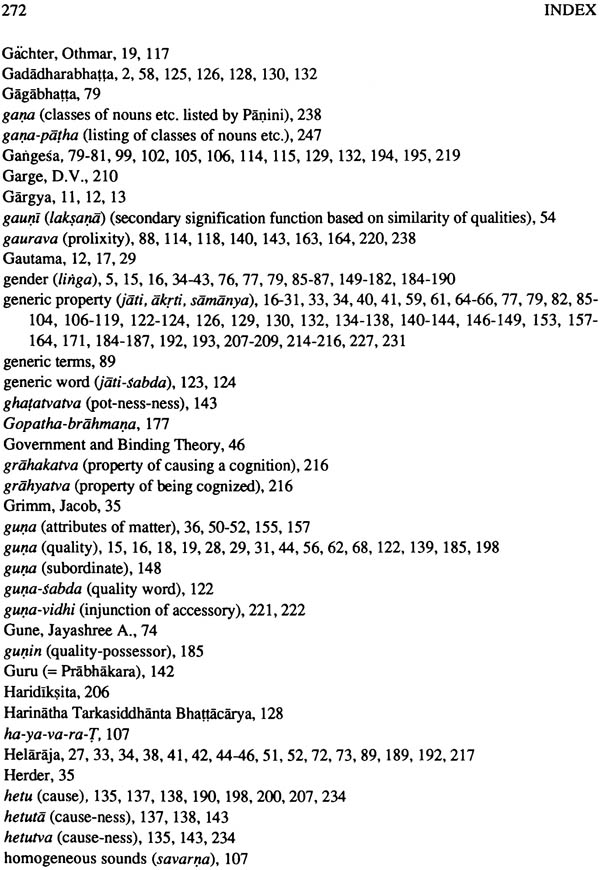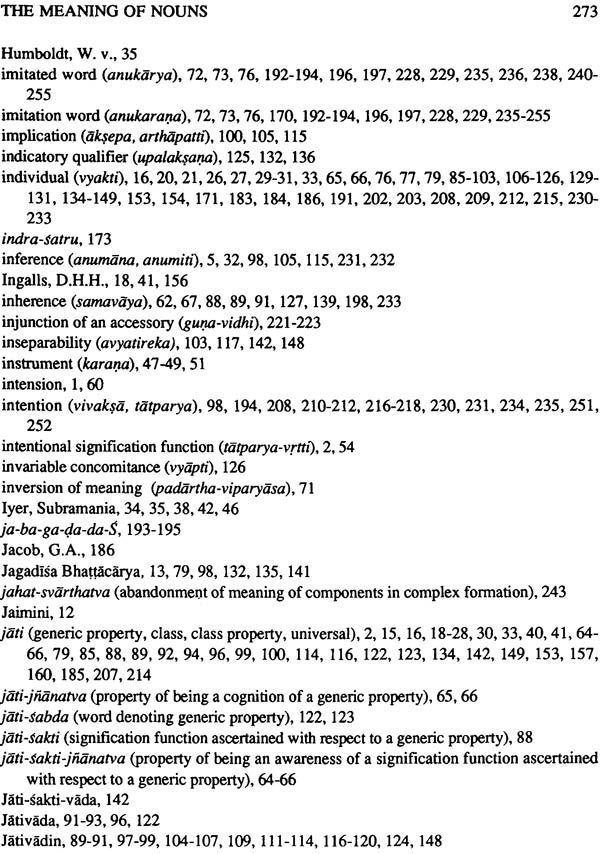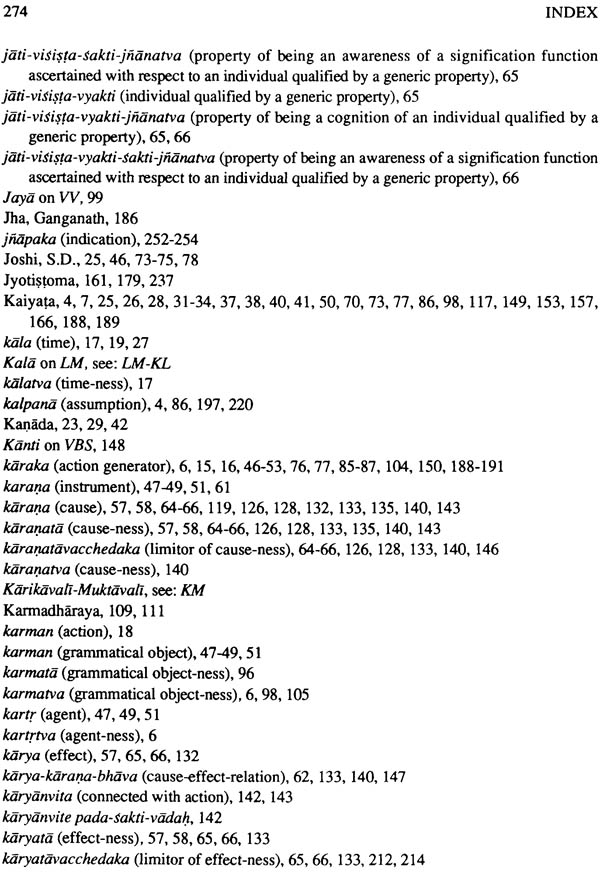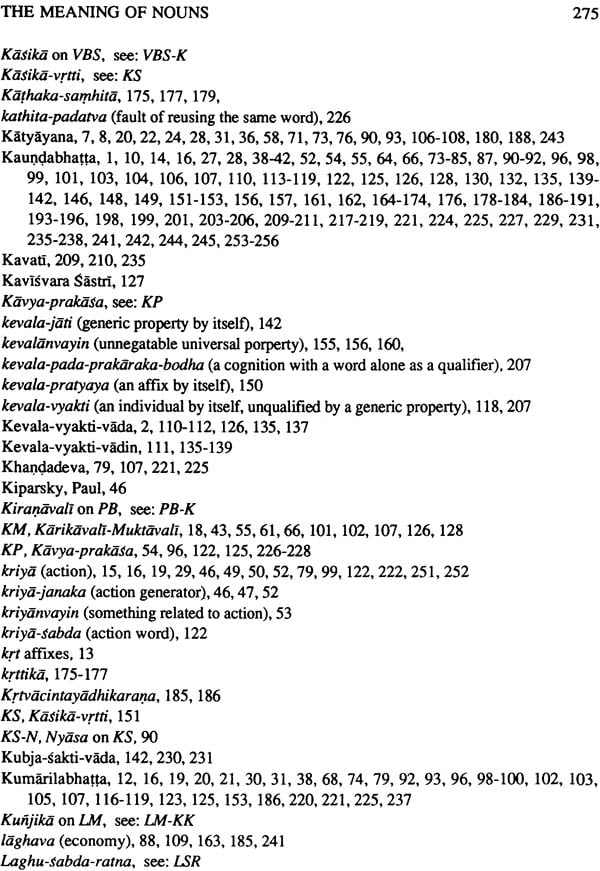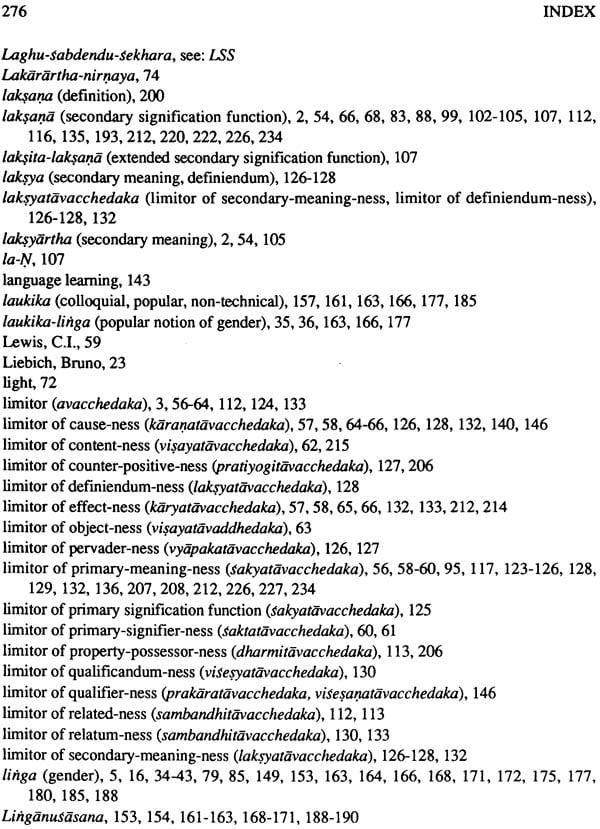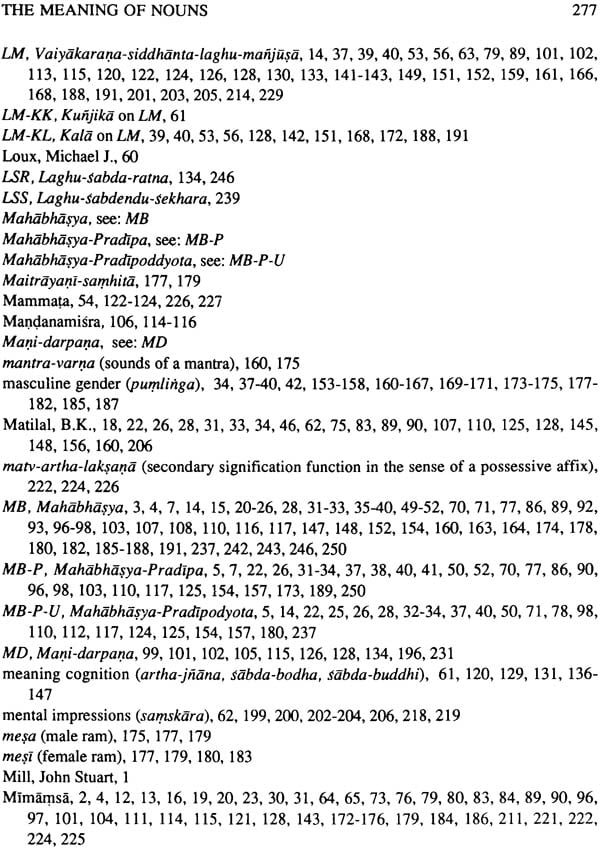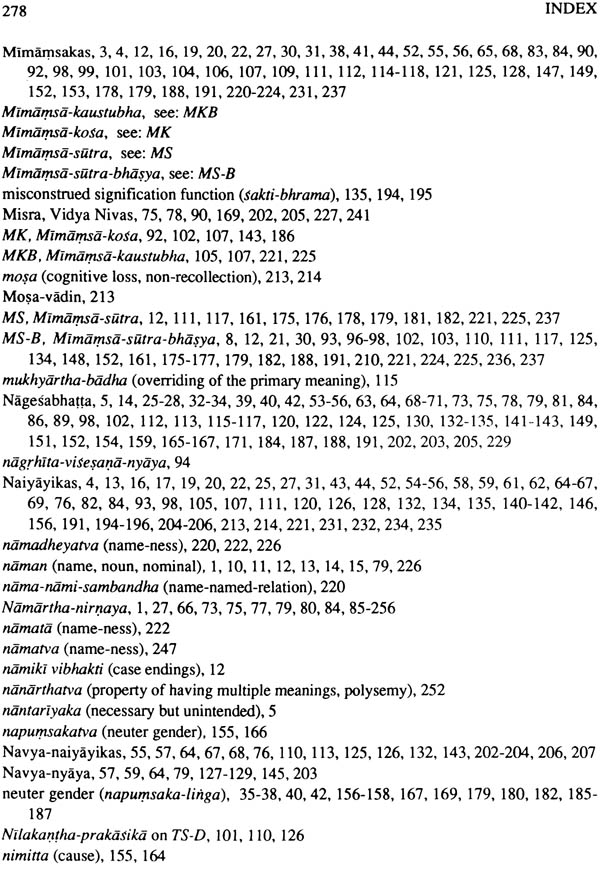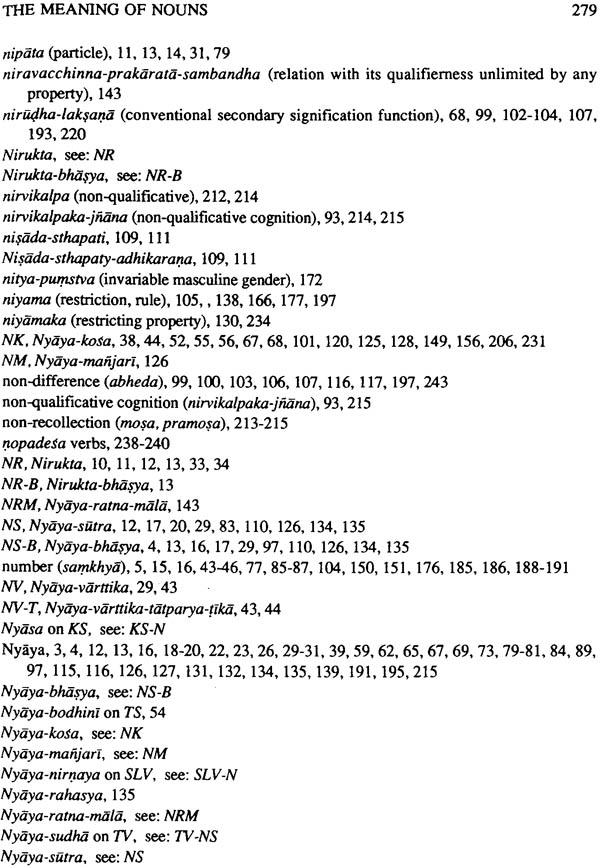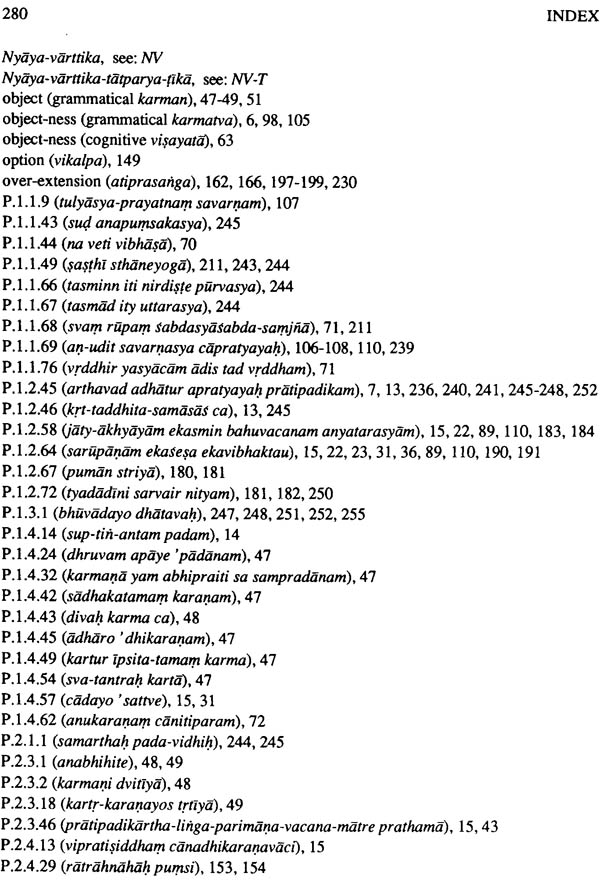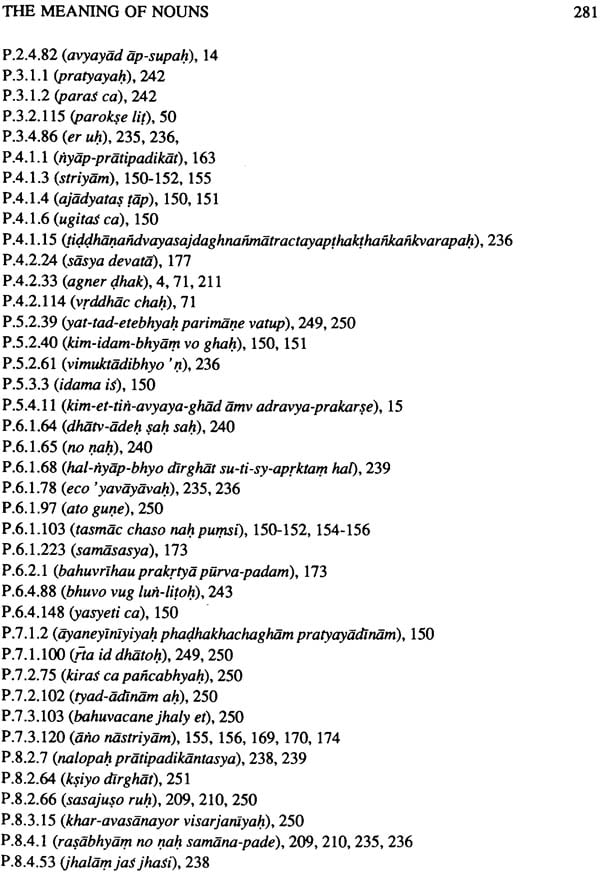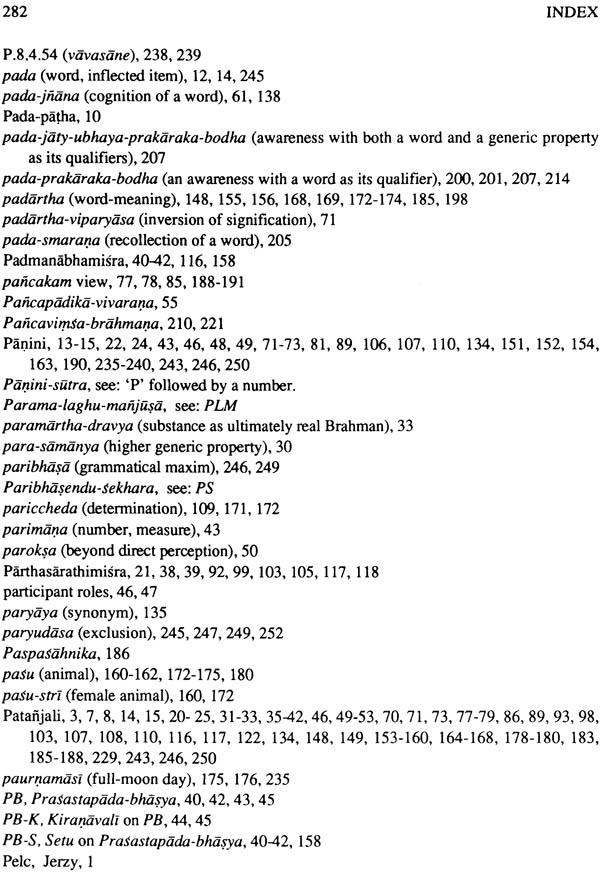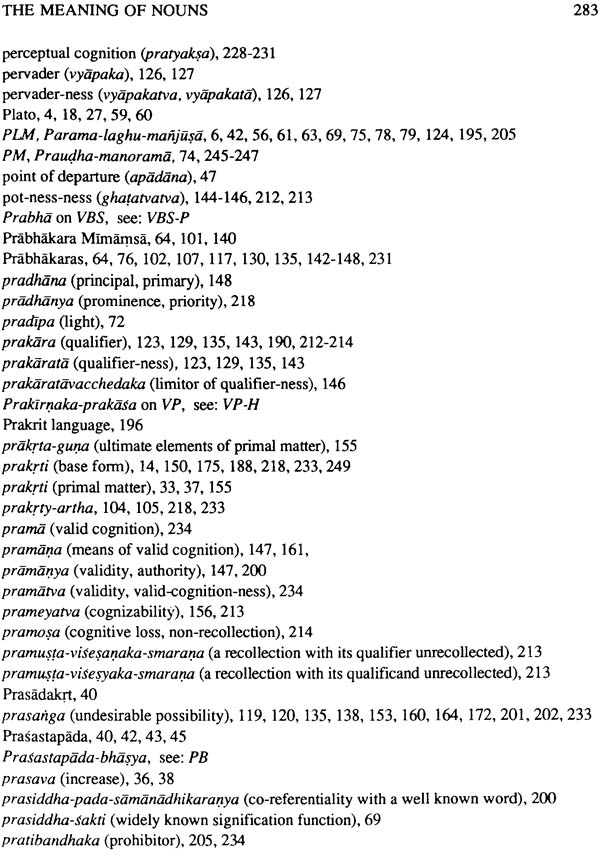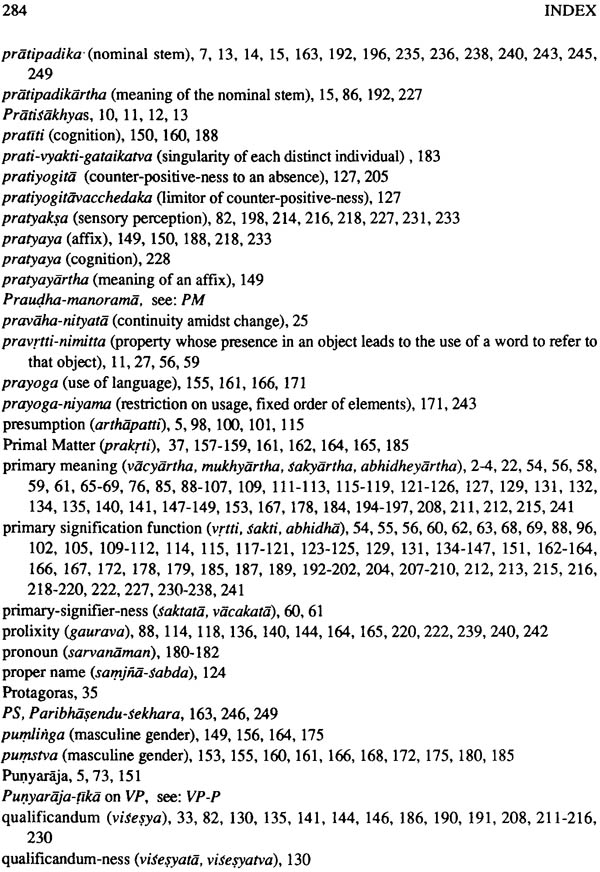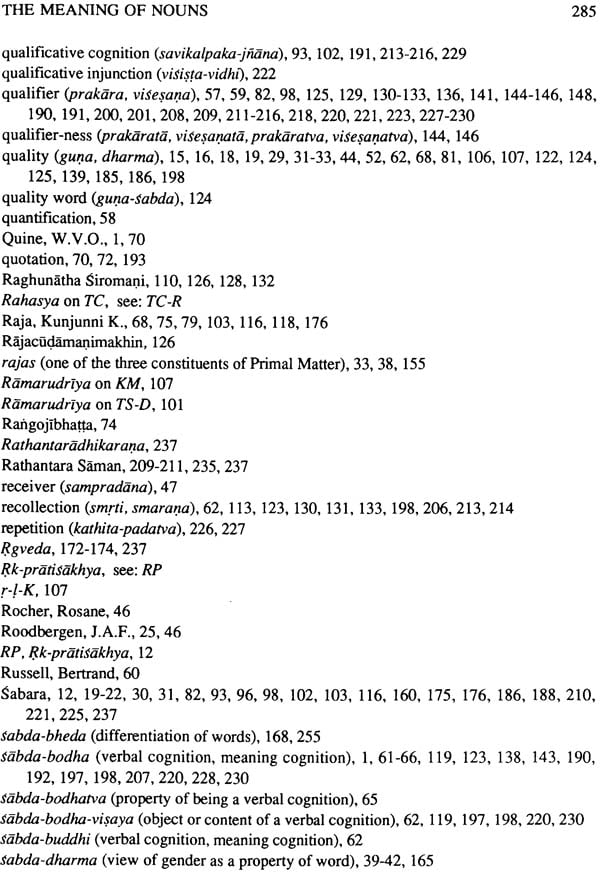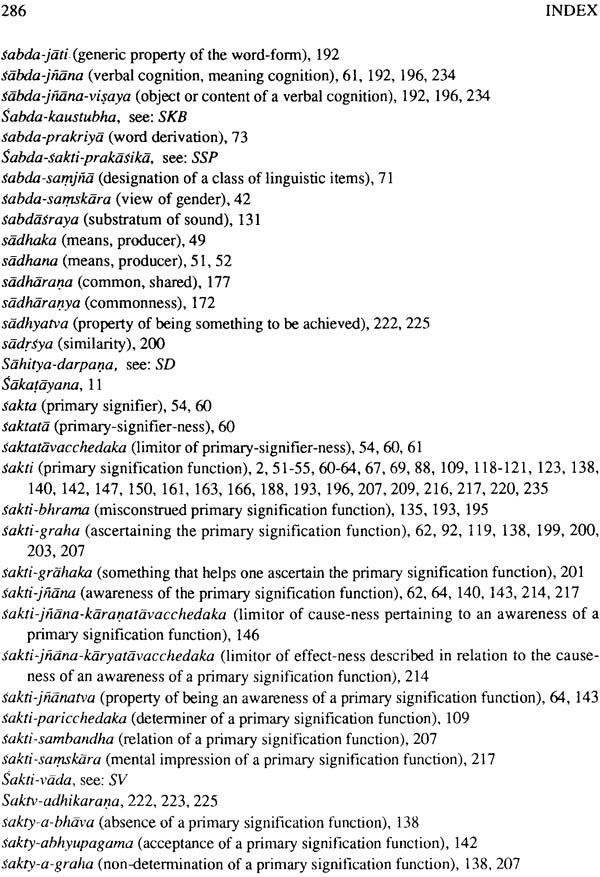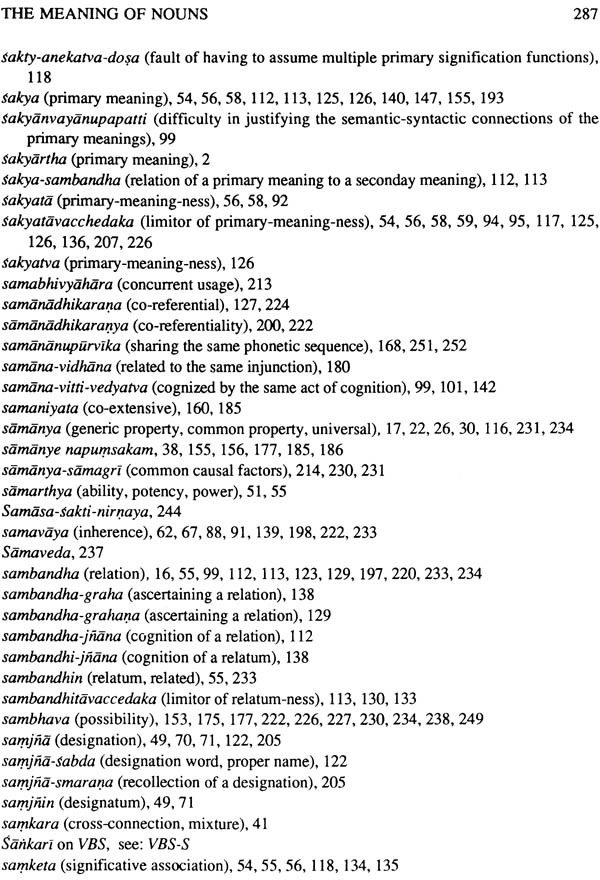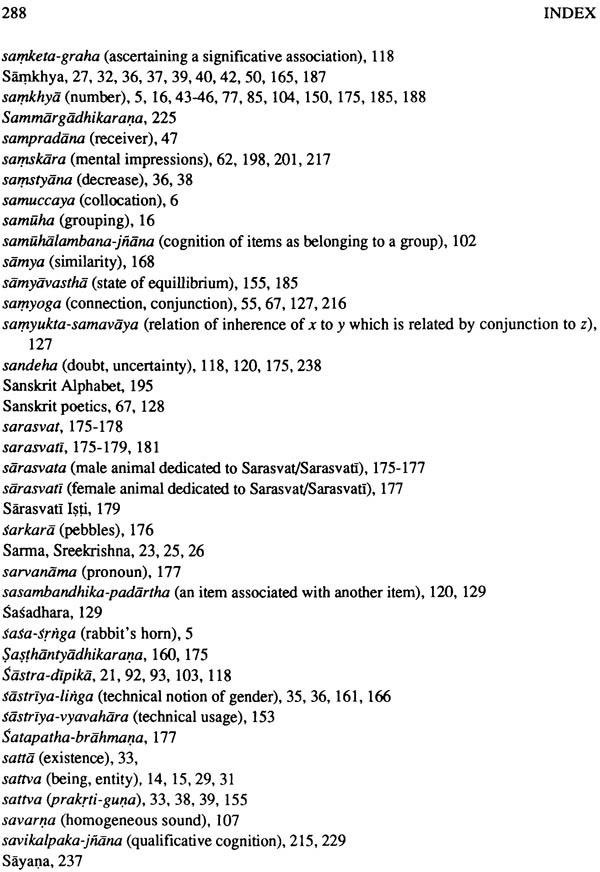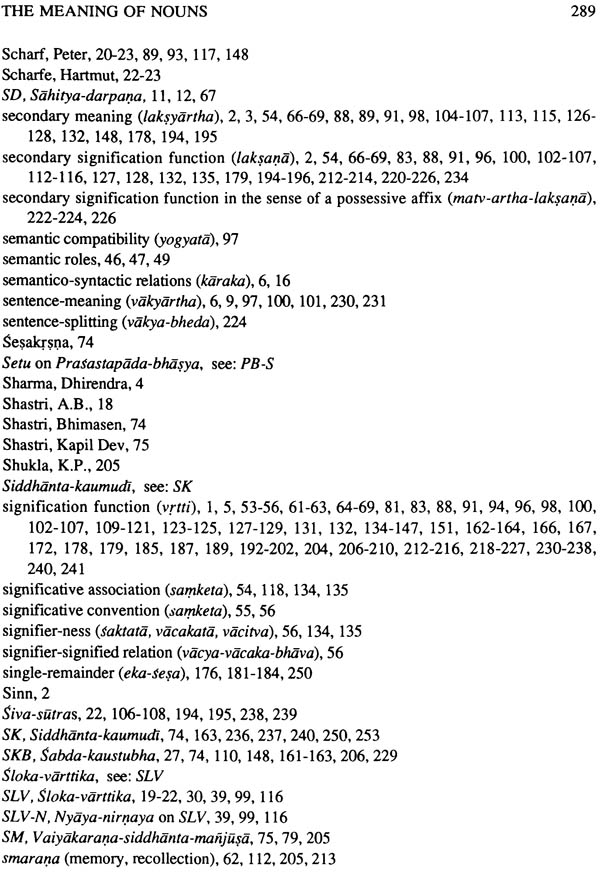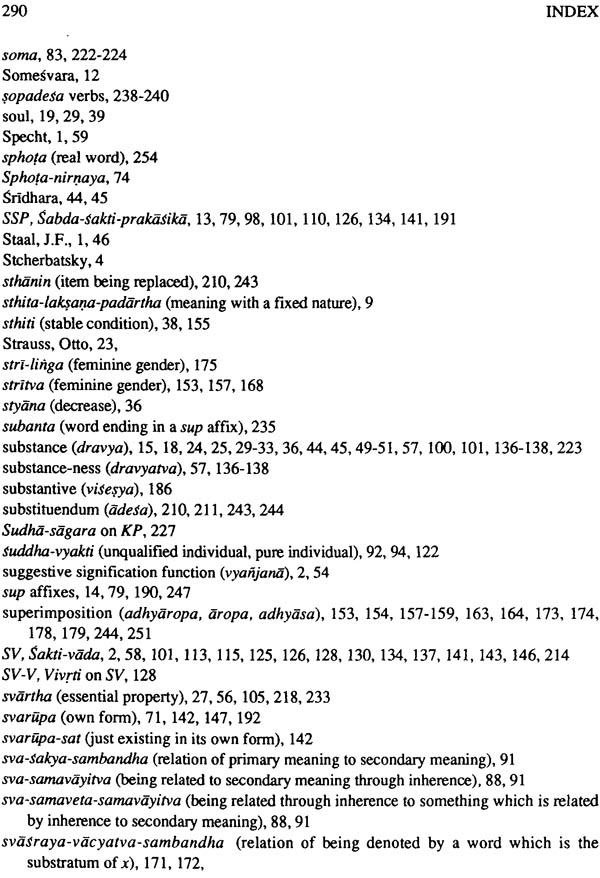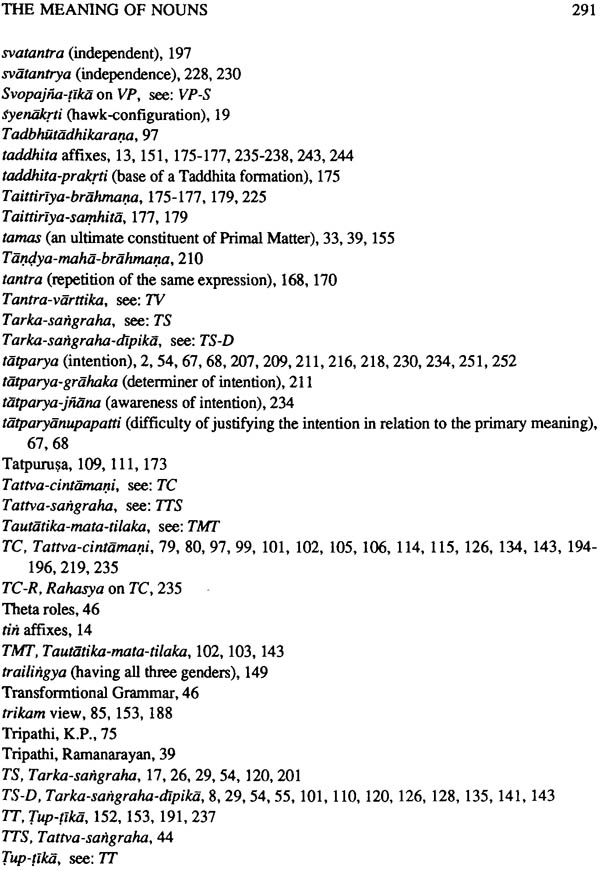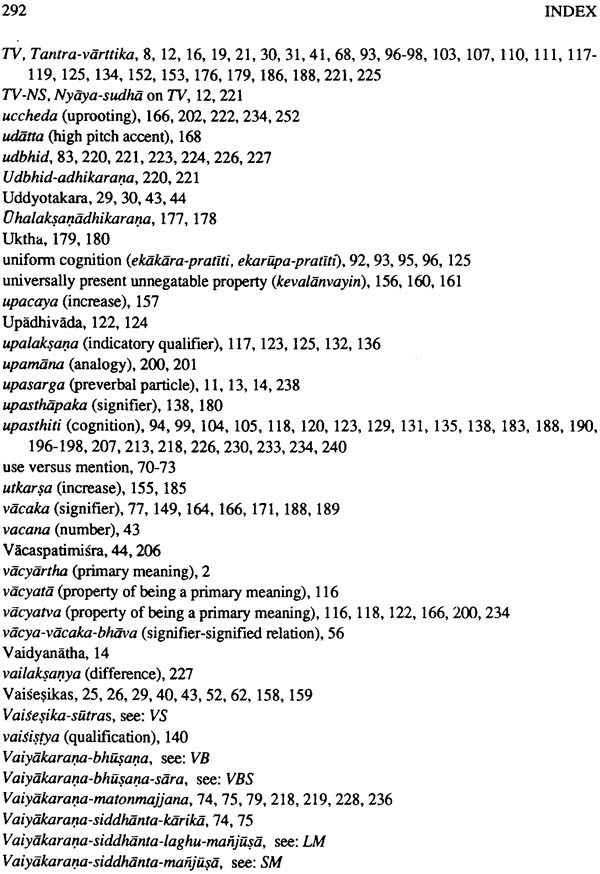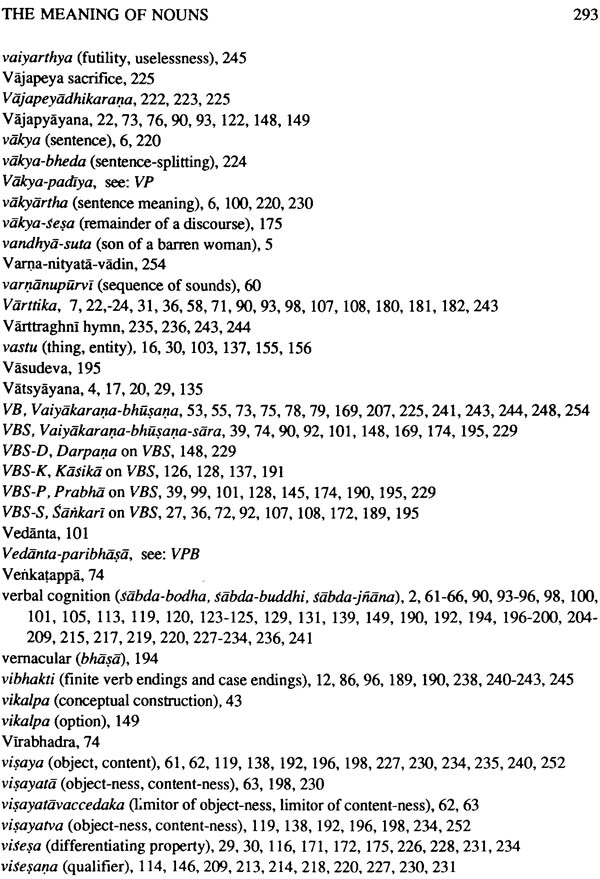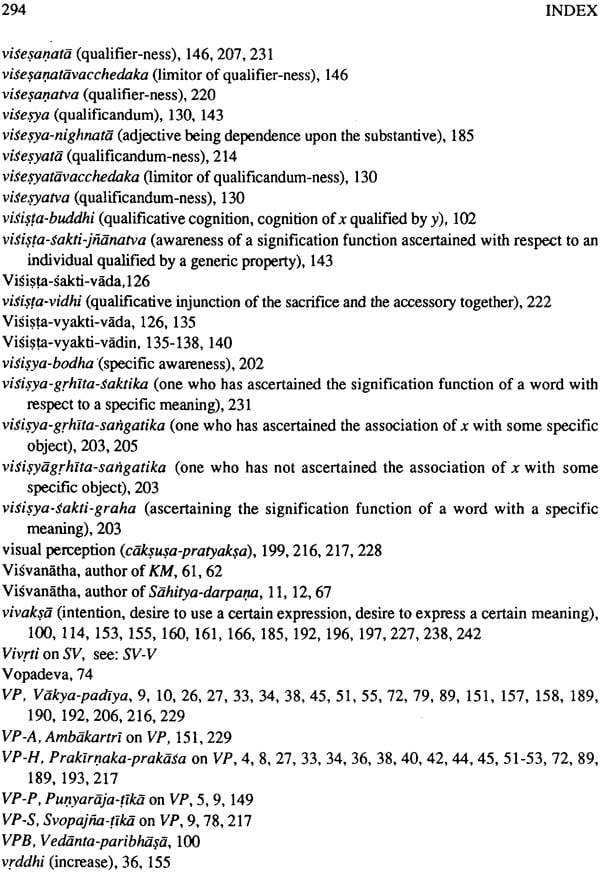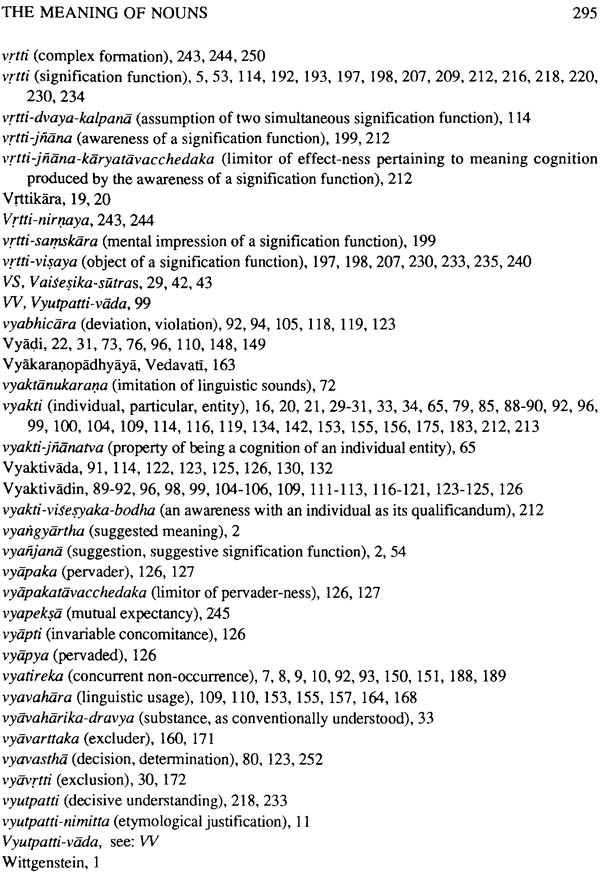
The Meaning of Nouns (Semantic Theory in Classical and Medieval Indian)
Book Specification
| Item Code: | IDK122 |
| Author: | Madhav M. Deshpande |
| Publisher: | D. K. Printworld Pvt. Ltd. |
| Language: | English |
| Edition: | 2007 |
| ISBN: | 9788124604311 |
| Pages: | 295 |
| Cover: | Hardcover |
| Other Details | 8.9" X 5.8" |
| Weight | 570 gm |
Book Description
About the Book
Kaundabhatta's Vaiyakarana-bhusana is a massive work on semantic theory is a massive work on semantic theory written in India in the 17th century. Kaundabhatta belonged to the tradition of Sanskrit grammar and in this work he consolidated the philosophy of language developed in the Paninian tradition of Sanskrit grammar. His work takes account of the philosophical debate which accurred in classical and medieval India among the philosophers and grammarians from about 500 BC. to the 17th century AD and primarily represents this debate between the traditions of Sanskrit grammar, Mimamsa and Nyaya-Vaisesika. It discusses ontological, epistemological, and exegetical issues concerning the notion of meaning as it relates to the various components of language. The present book is a heavily annotated translation of the Namartha-nirnaya section of Kaudabhatta's Vaiyakarana-bhusana, with an extensive introduction. While there are several books that discuss Indian semantic theories in general terms, this book belongs to a small class of intensive, focused studies of densely written philosophical texts, which examine each argument in its historical and philosophical context. It is of interest to all students of philosophy of language in general and to students of Indian philosophy in particular.
About the Author
Madhav M. Deshpande is Professor of Sanskrit and Linguistics in the Department of Asian Languages and Cultures, University of Michigan, where he has been on the faculty since 1972 teaching all levels of Sanskrit as well as Pali, Prakrit and Hinduism. His research relates to the fields of Paninian, historical, and socio-linguistics, as well as the cultural and linguistic history of India. Besides his research publications Aryan and Non-Aryan in India; Kaundabhatta on the Philosophy of Nominal Meaning; and Evolution of Syntactic Theory in Sanskrit Grammar, Professor Deshpande has participated in Sastric and literary debates and has also published Sanskrit poems and plays.
Preface
This book presents a fully revised version of my Ph. D. dissertation, which was originally written and completed in Philadelphia in April 1972, and was submitted to the Faculty of the Graduate School of Arts and Sciences of the University of Pennsylvania. I came to Philadelphia as a graduate student in the Department of Oriental Studies of the University of Pennsylvania in September 1968. My earlier academic training was done at Pune at India. I owe my original interest in Sanskrit grammatical tradition to Pt. Vaman Shastri Bhagwat. I studied Sanskrit grammar with him at the Tilak Maharashtra Vidyapeeth, Pune from the early years of my high school till I finished my master's degree in Sanskrit at the University of Poona in 1968. Other teachers with whom I studied Sanskrit grammar in my early years include Pt. N.N. Bhide and the late Pt. Narayan Shastri Dikshit. Professor S.D. Joshi of the University of Poona provided the most valuable analytical insights into Sanskrit grammar. I studied with him as part of my coursework for the master's degree in Sanskrit at the University of Poona. I also studied with Professor R.N. Dandekar, Professor G.B. Palsule, and Professor M.A. Mehendale at the University of Poona.
Mostly as a result of efforts and encouragement from Professor S.D. Joshi, I came to the University of Pennsylvania in 1968. Here, my two primary teaches were Professor Ludo Rocher and Professor George Cardona. Besides these, I also studied with Professor Henry Hoenigswald, Professor Ludo Rocher who was the chairman of Oriental Studies at Penn, for assisting me in every possible way and for directing me to achieve a synthesis of my eastern training in Sanskrit with the western analytical methods. Most of all I am indebted to Professor George Cardona. With him I learned not just how to read texts in Sanskrit grammar, but essentially how to argue the pros and cons of a complicated argument. It was a most rewarding experience to discuss and argue with Professor Cardona many finer points of Sanskrit grammatical theory and come away with new insights. He read every single line of my original dissertation in its many versions and made detailed suggestions for improvement.
It has been twenty years since this dissertation was originally written. After 1972, I moved into somewhat different academic areas of Sanskrit linguistics. It was during 1989 that Professor Bimal Krishna Matilal suggested that I should revise my dissertation and publish it in the series Studies of Classical India of which he was the editor. I accepted his suggestion and have thoroughly rewritten the original dissertation. It has been bibliographically updated, and I have taken due notice of the many important contributions which have appeared during the last twenty years. I am deeply saddened that Professor Matilal is no longer alive to see this book in print.
I am deeply grateful to the Graduate School of Arts and Sciences of the University of Pennsylvania for providing a four-year fellowship, which allowed me to complete the original dissertation in a relatively short period. I am equally indebted to my many friends in Philadelphia who helped me in various ways. Last but not least, I would like to thank my wife, Shubhangi, for standing by me and encouraging me all the way.
The person most instrumental in making sure that I write a decent dissertation was after all Professors George Cardona. While I am still responsible for problems and errors in my analysis, the positive merit of the original work is due in large measure to Professor Cardona's watchful eye. Therefore, with great respect and affection, I dedicate this book to him.
| Approximate Chronology of Indian Philosophers | viii | |
| Preface | ix | |
| Introduction | ||
| A. | Artha "Meaning" | 1 |
| B. | Logical Basic of Semantic Analysis | 6 |
| C. | What is a Naman "Noun, Nominal Stem"? | 10 |
| D. | Ontology of Possible Nominal Meanings | 15 |
| Jati/Akrti "Generic Property/Configuration" | 17 | |
| Sattva/Dravya/Vyakti "Individual Object" | 29 | |
| Linga "Gender" | 34 | |
| Samkhya "Number" | 43 | |
| Karaka "Means to Bring about an Action" | 46 | |
| E. | Functional Apparatus of a Semantic Theory | 53 |
| Vrtti/Sakti "Signification Function of Words" | 56 | |
| Pravrtti-nimitta/Sakyatavacchedaka | 60 | |
| Sabda-bodha "Verbal Cognition" | 61 | |
| Laksana "Secondary Signification Function" | 66 | |
| F. | Sabda itself as Artha: Use versus Mention | 70 |
| G. | Bhattoji Diksita and Kaundabhatta | 73 |
| H. | Kaundabhatta's Namartha-nirnaya | 75 |
| I. | Conclusion | 78 |
| Some Features of Philosophical Discourse | 80 | |
| NAMARTHA-NIRNAYA with Translation and Annotation | ||
| Section One | 85 | |
| Section Two | 88 | |
| Section Three | 109 | |
| Section Four | 134 | |
| Section Five | 153 | |
| Section Six | 188 | |
| Section Seven | 192 | |
| Bibliography | 257 | |
| Index | 266 |
